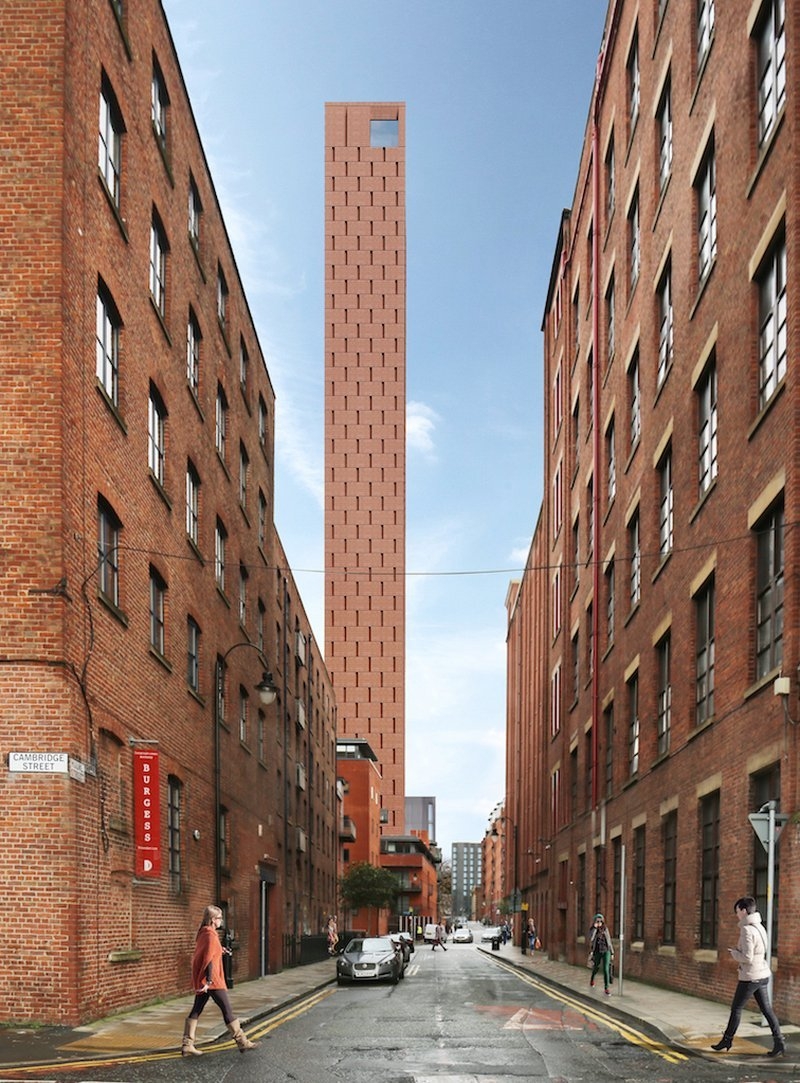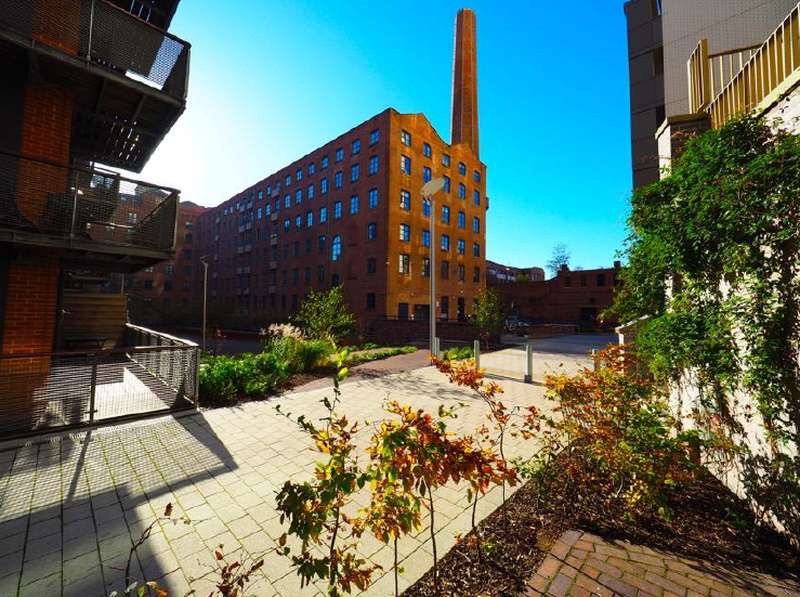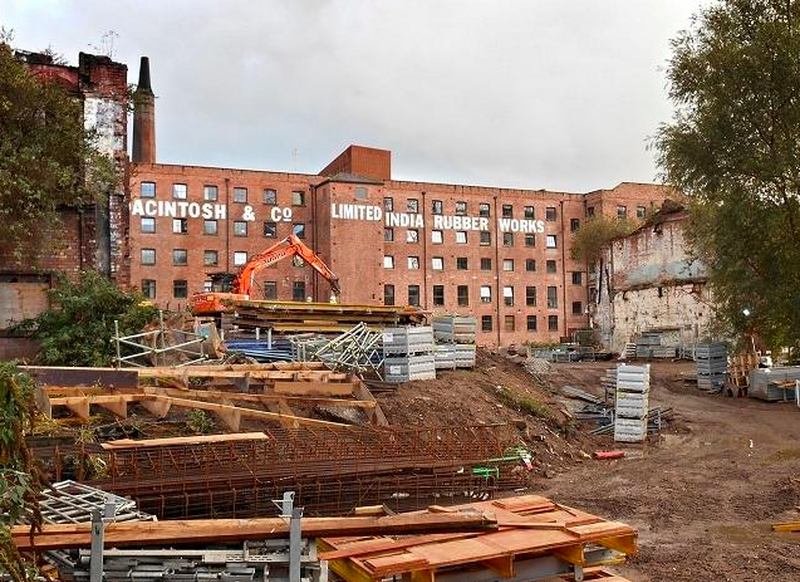Jonathan Schofield on the residents group taking the council to task over a 70% student take over
MACINTOSH village residents are up in arms. They are worried about the growth in number and scale of the student accommodation in their city centre district.
If you’re not sure where Macintosh Village is, it lies between Oxford Road and the First Street development, centred on Chester, Hulme and New Wakefield Streets, east to west, and Great Marlborough, Cambridge and Wilmott Streets, north to south.
It’s clear within the strategy that ‘Fallowfieldisation’ is to be avoided.
What the residents have done in fighting a planning application for a new 55-storey student tower from developer Student Castle is remarkable. They have banded together, pooled the immense talent pool at their command and started to dig forensically into planning law, the way Manchester applies it and the way developers work with it. The report they have produced, titled the ‘Macintosh Village Community (MVC) Objection’, is a masterpiece of community action.

The growth of purpose-built student accommodation (PBSA) in the area is jaw-dropping and shatters the original masterplan drawn up by Sir Terry Farrell. As the report by MVC states: ‘A key part of the master-planning was to break the mould of generic city centre developments by creating a neighbourhood providing housing for a range of residential occupants. Emphasis was placed on the delivery of family dwellings with associated facilities including the successful Bright Horizons Day Nursery & Pre-school.’
It goes on to say: ‘Today Macintosh Village is a vibrant and diverse residential location in the heart of the city. It contains a broad range of residential properties from converted warehouse apartments to townhouses.
‘It has a high level of owner occupation and people of all ages call Macintosh Village their home from two months to eighty years young. It is a model for sustainable city centre living. Macintosh Village is cherished by its residents for its strong sense of community. Greater Manchester Police and Manchester City Council acknowledge this proactive neighbourhood and the partnership we enjoy.’

Mike Halley is the Chairman of Macintosh Village Management Company. He volunteers his time to build community in the area and campaigns for lower service charges for residents. He says “The problem is the balance between students and other residents is being blown out of the water”.
He explains that when the 37-storey Student Castle (now Liberty Heights) was occupied in 2012/2013 the difference between student numbers and other residents became heavily skewed in favour of the former: 52% student and 48% others.
But that was just the beginning, and it was against the city’s own core strategy. It’s clear within the strategy that ‘Fallowfieldisation’ is to be avoided.
Halley says, “The council, with its student strategy and polices as stated in its core strategy called ‘H10’, have perfect knowledge to predict the community harm and impact of allowing the ratio of more than 20% student to residential within a 100 metre radius of each other."
If the new tall tower at Macintosh Village is completed the difference will be 63% to 37%. If all the proposed PBSAs are delivered then student/resident ratios will be a mind-blowing 72% to 28%.
But how did the group arrive at these figures?
“We just added up all the buildings, all the dwellings and said, 'you’ve got a policy and you’re smashing it to bits',” says Halley. “The council are saying the masterplan was never formally adopted which doesn’t matter because it is breaking its own core policy anyway.
"Why can’t they just use a presumption of refusal to developers who wish to build huge PBSA schemes or anything else for that matter. Why can’t they say, ‘no, this would breach our own rules’? This should be made clear right from the beginning, during the pre-application consulting phase. After all, the applicant has paid for that pre-application consultation, so they should learn straight from the off that this is a lost cause.”
MVC layer on their objections beautifully. They underline how the area was always intended for medium not mega scale structures. They point out that should the new 55-storey (165m, 541ft) tower be built, the residents will have suffered more than ten years of noise, road closures, concrete dust and an ‘asbestos dust cloud’. In other words, huge upheaval and disruption.
They condemn the layout and design ‘which includes a 165m (541ft) brick gable end with its back toward the neighbourhood. The building, they say, will 'dominate and lead to loss of privacy, daylight and sunlight.’ They point out that it doesn’t ‘address’ the street, something even Student Castle/Liberty Heights does, and that the effect of the high buildings in narrow streets will produce canyons that in turn become wind tunnels.
Purpose Built Build Student Accommodation does not pay business rates. The students inside them do not pay council tax. In other words PBSAs squat on the land contributing no cash to a cash-strapped city.
The report even point outs, according to police figures, how crime has risen by a third in recent years as student numbers have risen (although police cuts haven’t helped).
The way MVC take apart application documents is almost amusing. A crucial argument again stems from the city’s core strategy document, it’s H12 criteria, which states that ‘Developers will be required to demonstrate there is a need for additional student accommodation or that they have entered into a formal agreement with a University, or another provider of higher education’.
As Halley and the MVC report says: ‘The application is not progressed with University support or partnership. Manchester Metropolitan University has listed reasons why it does not support the application primarily around cost. The niche target market the applicant has targeted is 69% more expensive than university-owned and therefore not attainable or desired by the majority of their students. The application is well below London Standard sizing standards adopted by MCC, the majority of the self-contained units being just 17sq m of living space.’

The new Unite tower would also require part demolition of the Macintosh Village Car Park. MVC produce some startling information here.
They say that the existing ‘car park is viable and needed. The three commercial units (if) allowed to open for business as per the original grant could produce recurring financial year business rates of £209,000 per annum. The car park if converted to shared public spaces would generate in excess of £100,000 per annum recurring business rates contribution. The total contribution (called a Section 106) for Student Castle/Liberty Heights was a single one-off payment of £200,000.’
So, get this, Purpose Built Build Student Accommodation does not pay business rates. The students inside them do not pay council tax. In other words PBSAs squat on the land contributing no cash to a cash-strapped city. Who knew?
“Sir Charles Dunstone sold on his five properties in the Student Castle portfolio in 2015 and got £335m,” says Halley, “If we are going to build properties such as the new 55-storey tower we should be questioning why such expansion hasn’t made the city wealthier. This doesn’t seem equitable. Nor does it seem equitable that the residential character of my quarter of the city has been reversed against the masterplan and policy. If this continues then you can see people deciding to time out on central Manchester.”
Macintosh Village Community has produced a model of resident cooperation in trying to protect the integrity of its own district. It also provides a telling insight into the city’s planning and the way developers work, while remaining positive and forward looking. It is a model that could be followed by many other similar residents’ groups.
It also asks this question loud and clear: 'If a proposed building is against agreed city policy and the core strategy then why isn’t planning permission refused?' Indeed, why would a developer even proceed if they knew they were going against policy and core strategy?
Confidential will pursue the answers to those questions in part 2 of this article (coming in the next few weeks) and take a closer look at Purpose Built Student Accommodation
The planning application for the new student tower is at pre-planning committee stage and awaiting the applicant to respond to the community’s concerns and questions.















